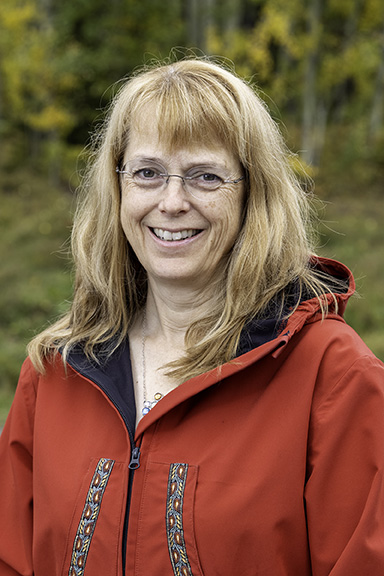Friday Focus: Birds of a feather: A new twist on the cohort effect

Nettie LaBelle-Hamer, vice chancellor for research
Oct. 7, 2022
— By Nettie La Belle-Hamer, vice chancellor for research
While participating in technical interface meetings with NASA over many years, I learned how effective cohorts can be in solving problems. A cohort is simply any group of people with a shared characteristic, but in science the term more often refers to a group of people being studied rather than the ones doing the studying. In cross-sectional studies, results can be compromised by the inability to separate out things attributable to the cohort itself. Researchers must ask themselves, are the differences between the cohorts the result of the process under study or are there other unrelated differences between the cohorts that dominate the results? An example of this is studying birth year cohorts for the effects of aging. What if the people are affected more by where they grew up than by the aging process itself? Compromising the results in this way is called the cohort effect.
I am interested in a different kind of cohort effect. While a rose is still a rose by any other name, perhaps the same cannot be said about cohorts. Again, leaning on my years working with NASA, names matter. (As I write this I realize, sadly, that with a big birthday coming up next year very few of you reading this would be in my birth cohort even though we MAY be in the same age-defined-by-how-old-you-feel cohort, which is not a thing. But, maybe it should be.) People are often grouped as committees, working groups, or tiger teams – all of which are usually work assigned to you in some way. NASA TIMs (yep. Another acronym.) have built in time in their schedule for Birds of a Feather.
BoaF meetings are self-organized. Time slots are added to the schedule for people to split into smaller groups, each focused on a sticky problem, and rooms are made available in the BoaF time slot for groups to meet separately. Anyone can name a BoaF focused on a particular issue they are interested in and people vote with their feet. The people who show up work together and often continue working together long after the meeting itself to solve their self-assigned problem. That is a good kind of cohort effect! I found an article that describes a similar concept used by academic librarians , so this is not unique to coders and scientists.
When I first was named interim VCR, one of the things I saw as a barrier to our success was the predominantly bad press that the university was getting, mostly centered around budget cuts. To read the papers, you would think ÓĐÁĎşĐ×ÓĘÓƵ was on the brink of collapse yet I knew that we are still doing great things every day! I wanted to get ÓĐÁĎşĐ×ÓĘÓƵ research into the news in a good way so I created a group I called “getting ÓĐÁĎşĐ×ÓĘÓƵ research into the news.” (Luckily for my children, I did better naming them.) It took a while, but once they self-organized, defined their wins, and renamed themselves the Research Communication Cohort, they soared! And they continue to soar! Have you noticed an increase in good news stories about research? It is subtle, but powerful. This is a new kind of cohort effect. One that is a force multiplier for research success!
In the summer of 2021, Natalie Monacci began meeting with other ÓĐÁĎşĐ×ÓĘÓƵ recharge center leaders to learn about their successes and challenges. She had to work hard to not only run this lab, but to learn through on-the-job training the complexities of university recharge centers. As a result of her initiative and drive, the ÓĐÁĎşĐ×ÓĘÓƵ Recharge Center working group began monthly meetings in Fall 2021. This grassroots, self-organized cohort eagerly shares experiences and ideas on ways to improve service to ÓĐÁĎşĐ×ÓĘÓƵ and other clients. They work together to solve problems and learn from each other. They recently met with me to discuss this cohort and their future plans. I am very excited to support their important work for the betterment of ÓĐÁĎşĐ×ÓĘÓƵ research! You will soon see a link to this cohort on the ÓĐÁĎşĐ×ÓĘÓƵ Research website.
We need more birds-of-a-feather type cohorts to help us get through these times of recovery from the devastating years of budget cuts. Every unit is thin, understaffed, and rife with single points of failure due to being reduced to one person, or less, in their unit with particular knowledge of technical work such as procurement, HR, or proposal development. But if you look across ÓĐÁĎşĐ×ÓĘÓƵ, you will find birds of a feather. Creating peer support and problem-solving teams with like-minded individuals from other units can provide the strength and resilience we need to recover from the budget cuts and reclaim our self-confidence. While it can be challenging to find time for meetings, either virtual or in person, the rewards of flocking together can far outweigh the time burdens. It provides cross-training for thinly staffed key roles. More importantly, it provides our people support. You are not alone.
I encourage you to find your birds of a feather at ÓĐÁĎşĐ×ÓĘÓƵ and flock together. Executive officers, HR coordinators, or proposal developers – all the vital support roles across the university often have more in common with the peers in other units than they do with people in their own unit. Even if it is just for building relationships, it makes for a lighter load at work to know you are not alone. I know I have said this before, but this African proverb I hold close to my heart is apropos:
If you want to run fast, run alone.
If you want to run far, run together.
You belong here and what you do is important. Find your flock and let’s run together.
Friday Focus is written by a different member of ÓĐÁĎşĐ×ÓĘÓƵ’s leadership team every week.


